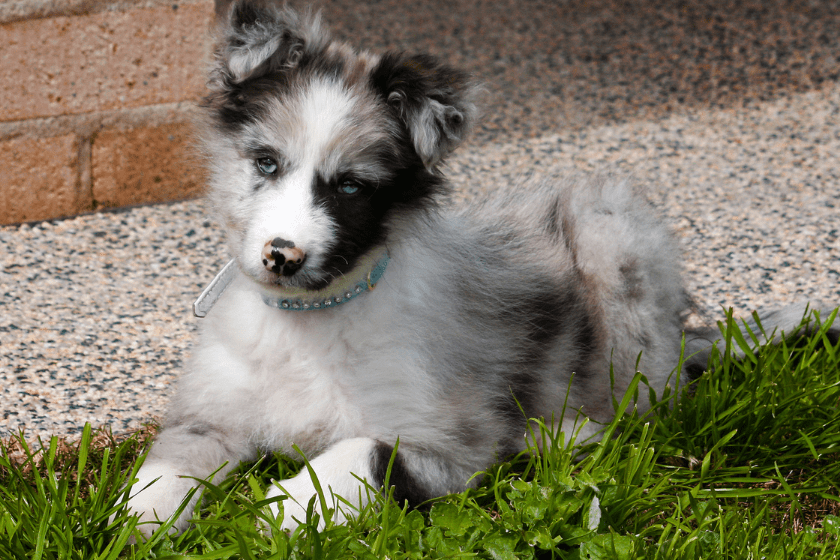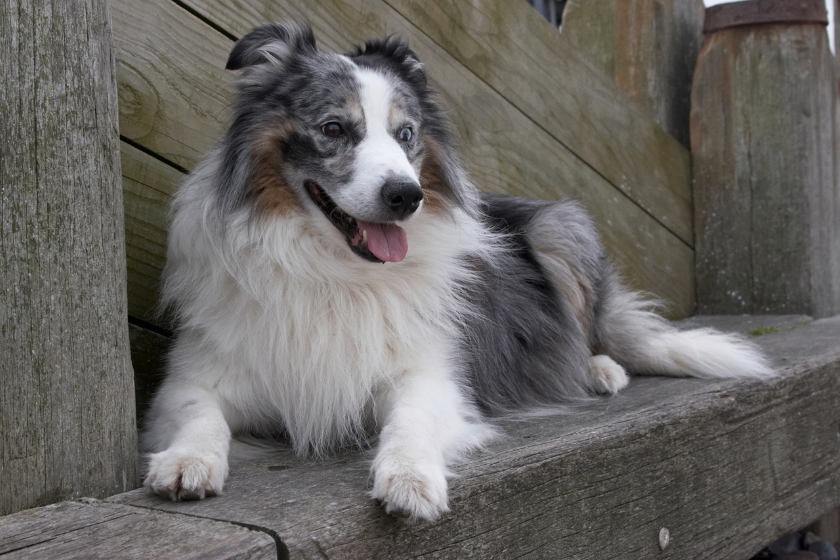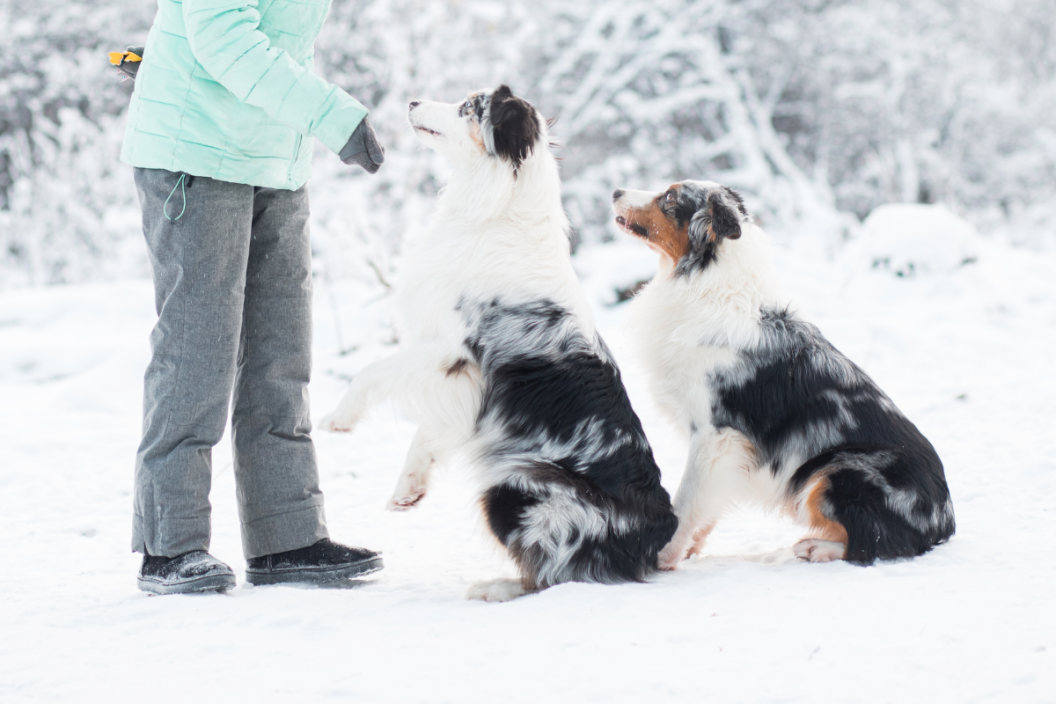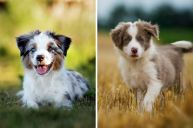Merle coats are beautiful, but are they risky?
Merle is a genetic pattern found in a dog's coat. Merle comes in different colors and patterns affecting all coat colors. The merle gene creates spotted patches of color, often blue or odd-colored eyes, and can affect skin pigment as well. These are beautiful patterns!
While the term 'merle' is often linked to blue merle, which is the most common coloration found, merle also creates chocolate or red coat patterns, too.
What Is A Merle Coat Pattern?

Merle is the name given to a certain specific coat pattern that can be found in dogs, rather than a particular color.
The merle gene results in a mottled coat pattern which, interestingly enough, also shows up in the skin pigmentation. Many owners are surprised to find that the coloration extends past the fur, especially if their pet has never been shaved! The gene combination that results in merle coloration can also result in other genetic differences as well.
What Breeds Commonly Have Merle Coats?

The merle (also called dapple) pattern is commonly seen in Catahoula Leopard Dogs, Australian Shepherds, Collies, Shetland Sheepdogs, Dachshunds, Cardigan Welsh Corgis, and Great Danes.
Though rare, Chihuahuas, Border Collies, Pyrenean Shepherds, Beaucerons, Pomeranians, and Cocker Spaniels breeds also have traces of merle in their lineages.
What Color is a Blue Merle?

A blue merle is actually a black dog whose coloring has been genetically diluted. Parts of his black coat remain intact, while other parts take on a bluish-grey color. Patches of solid color are normally irregular in shape and are located anywhere on the dog's body.
Merle comes in different colors and patterns. The blue merle Border Collie and blue merle Australian Shepherd are the dog breeds most people are familiar with when they think of 'merle' coat colors.
Merle coloring often comes with different eye colors too. Merle puppies are adorable! Other dog breeds you may see in this color pattern? There are merle Pit Bulls, merle Shelties, merle Aussies, and merle Shetland Sheepdogs.
Health Concerns in Merles?

While beautiful, dogs with the merle gene unfortunately have a set of potential health problems to contend with. Pet owners with merle dogs should be on the lookout for several health concerns, including congenital deafness and blindness. Blindness is particularly prevalent in double merle dogs with blue eyes. Even if the merle coat doesn't cause full blindness, it can result in poorly developed eyes.
If a dog comes from parents with two merle genes, the resulting double merle gene can produce a dog known as "lethal white" or "double blue." These dogs are usually born totally blind, deaf, or both, and can suffer from a host of other birth defects such as missing vital organs, missing paws, missing eyes, and more. While this pigmentation is gorgeous, the outcome can be lethal for the pup in question.
Responsible breeders will stay away from these breeding practices, but be sure to know the lineage of any puppy you purchase with a merle coat.
Do you know any merle breeds? Tell us on the Wide Open Pets Facebook page!
This article was originally published on June 29, 2020.
READ MORE: Dilute Calicos: What Causes Their Beautiful Colors?




